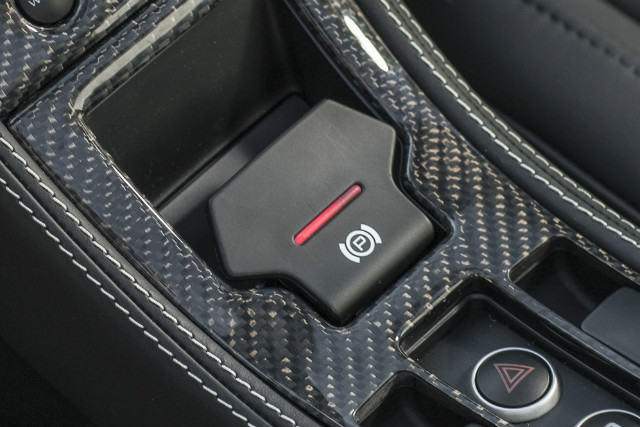The lever-operated handbrake (also known as parking brake) is a standard feature of cars that everyone’s familiar with. But more and more new cars in recent years are replacing this lever with a small switch called an electronic handbrake.
How do they differ and is one preferable to the other? This guide explains what makes a handbrake and electronic handbrake different.
How do they work?

Whether your car has a handbrake or electronic handbrake, they both serve the same purpose. They are used to keep the vehicle stationary and prevent it from rolling when you are away from the vehicle or stopped somewhere that’s sloped.
With a traditional handbrake, when you pull the lever up, you pull two cables which keep the rear wheels firmly in place.
An electronic parking brake comprises of a small switch positioned around where a traditional handbrake would be found. When this switch is pushed or pulled, motors on each brake calliper are activated, which work to keep each wheel locked.
You’ll know the electronic handbrake has been activated when you hear a whirring noise and a little red light on the switch turns on.
Unlike traditional handbrakes, an electronic handbrake can disengage automatically when you attempt to drive off in your vehicle. Sometimes, however, when you first start the car, you’ll actually need to have your foot on the brake and push/pull the switch first. This can also apply when trying to reverse.
Is one better than the other?
Traditional handbrakes are a well-established and dependable device, but an electronic handbrake can be considered a luxury feature, partly because they require less physical effort. They also hold the car more securely and don’t need possible readjusting like a lever might need now and then.
Most electronic handbrakes also come with a hill hold control function which keeps a car automatically still on steep roads and lets you pull away smoothly any time. On top of all that, electronic handbrakes also take up less interior space than traditional levers.
One thing to watch out for though when choosing a car with an electronic handbrake is that you’ll need to get the brake pads regularly checked by a mechanic. This can prove somewhat costly because of the tools required for the task.



